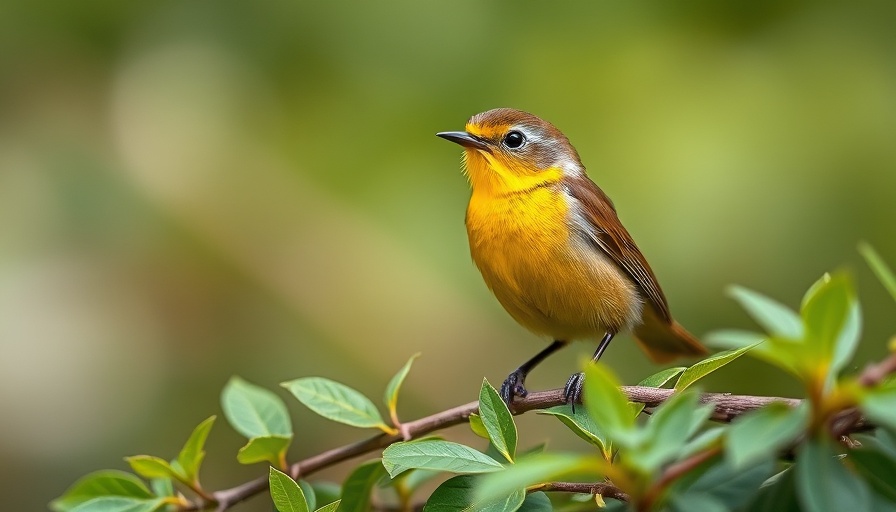
Meet the Common Yellowthroat: A Bird of Adaptation
The Common Yellowthroat, a vibrant yellow warbler distinguished by its unique black "bandit mask," is one of North America's most abundant songbirds. You can easily spot this adaptable bird in a variety of environments, including marshes, overgrown fields, and urban areas where other, more selective warbler species might not thrive. Their capacity to coexist with humans makes them an integral part of suburban and city ecosystems.
The Allure of Their Song: Nature's Earworm
One of the most delightful aspects of the Common Yellowthroat is its song, often remembered by the catchy phrase, "witchety-witchety-witchety!" During the breeding season, a male may sing this memorable tune as many as 300 times in one hour. This prolific singing not only serves the purpose of attracting a mate but also establishes territory amongst competing males.
Why Enjoying Birds Matters: Connecting With Nature
Observing birds like the Common Yellowthroat can foster a deeper connection with the natural world. Their presence and songs enrich our daily lives, reminding us of the beauty and complexity of nature. Engaging with local birds can also ignite passion in conservation efforts and promote awareness about the environments that sustain them.
Insights into Their Habitat and Diet
The Common Yellowthroat thrives in habitats rich with low-growing vegetation, which provides both nourishment and cover from predators. Their diet primarily consists of insects and spiders, making them valuable allies in controlling pest populations in gardens and parks. They can sometimes be seen in berry-laden bushes, indulging in a sweet treat between songs.
Encouraging Birdwatching in Your Community
Opportunities to observe the Common Yellowthroat are abundant, especially as urban areas often attract these warblers. By incorporating birdwatching into community activities, individuals can share experiences and foster appreciation for local wildlife. This not only enhances community bonding but also emphasizes the importance of preserving natural habitats and biodiversity.
 Add Row
Add Row  Add
Add 




Write A Comment